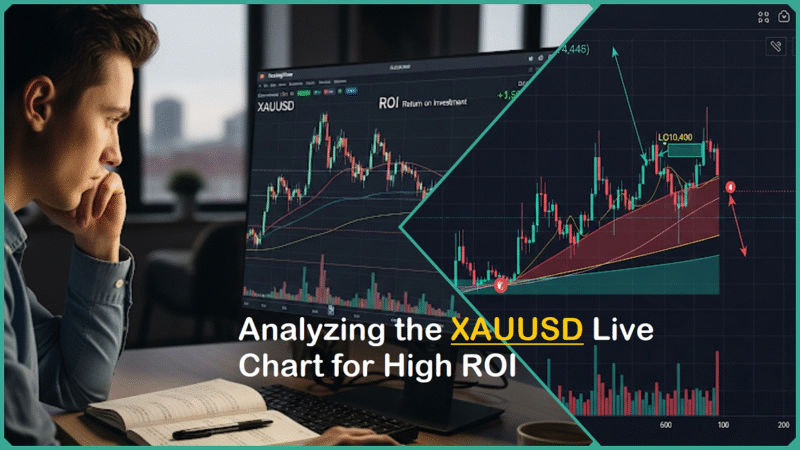9 Marketing Technology Strategies for Asset Management Firms
Estimated reading time: 19 minutes
Leveraging marketing technology (MarTech) has become essential for firms that aim to significantly enhance client engagement, substantially boost assets under management (AUM), and secure a sustainable competitive edge in today’s highly competitive and fast-evolving asset management industry.
The strategic use of MarTech tools and platforms enables firms to better understand client needs, personalize marketing efforts, and optimize their overall business performance in ways that were not possible before.

For marketing and sales professionals, executives, consultants, and wealth managers who are deeply involved in asset management, gaining a thorough understanding of how to effectively harness and implement the latest MarTech strategies offers an incredible potential to significantly transform and enhance their marketing efforts in a meaningful and impactful way.
This comprehensive guide thoroughly breaks down essential marketing technology concepts, providing a clear understanding of the fundamental principles. It also highlights the most current trends and significant developments shaping the industry today.
Additionally, the guide offers practical insights and actionable strategies designed to help asset management firms not only survive but truly thrive in an increasingly digital-first world where technology plays a crucial role.
Understanding Marketing Technology in Asset Management
Marketing technology (MarTech) in asset management refers to the comprehensive range of software applications, specialized tools, and digital platforms that firms utilize to strategically plan, efficiently execute, accurately measure, and continuously optimize their marketing campaigns and client engagement efforts within a highly complex and tightly regulated industry environment.
The primary goal of MarTech in this context is to enable and support highly targeted marketing initiatives, deliver personalized communication tailored to individual investor needs, and drive insightful, data-driven decision-making processes throughout every stage of the investor journey.
Key components of a MarTech stack specifically designed for asset management firms include:
Customer Relationship Management (CRM) Systems
These systems serve as a central hub to collect, centralize, and meticulously organize investor data, enabling firms to perform effective segmentation and execute highly targeted outreach campaigns. By leveraging detailed insights into investor profiles, preferences, and behaviors, companies can customize their messaging with precision, ensuring it resonates more deeply with each segment.
This carefully tailored approach significantly enhances investor engagement by addressing their specific needs and preferences, fosters stronger and more meaningful relationships through personalized interactions, and ultimately drives higher conversion rates by creating a more compelling and relevant investment experience.
Marketing Automation
Marketing automation significantly streamlines a wide range of repetitive tasks, including email marketing campaigns, lead nurturing processes, campaign management activities, and lead scoring systems. Automating these routine functions allows marketing teams to dedicate more time and energy to high-level strategic initiatives and creative planning.
At the same time, automation guarantees that investor communications are delivered with consistent quality, accuracy, and timeliness, significantly enhancing the overall efficiency and effectiveness of the communication process. This ensures that investors receive reliable and up-to-date information without delays, which helps build trust and strengthen relationships.
Analytics and Data Visualization
Provide detailed and actionable insights derived from the analysis of marketing campaign performance and comprehensive client behavior data. These advanced tools are designed to support more informed and strategic decision-making processes by clearly illustrating which marketing strategies are proving to be effective and identifying specific areas where optimization is needed to enhance overall outcomes.
Content Management Platforms
Facilitate the comprehensive creation, efficient management, and strategic distribution of educational and thought leadership content that asset managers rely on to effectively build trust and establish strong credibility with their clients and stakeholders.
Artificial Intelligence (AI) and Machine Learning
Enhance personalization significantly by enabling advanced predictive analytics alongside comprehensive campaign optimization strategies. Artificial intelligence plays a crucial role in supporting hyper-personalized client experiences, such as delivering highly customized portfolio recommendations tailored to individual preferences and needs.
Additionally, AI significantly enhances behavioral targeting on an extensive scale, enabling businesses to engage with their clients in a more precise, effective, and efficient manner than has ever been possible before. This advanced technology allows companies to analyze vast amounts of data quickly, tailoring their marketing strategies to meet the unique preferences and behaviors of each customer, ultimately fostering stronger connections and better results.
Digital Distribution Tools
Enhance and support direct-to-consumer (D2C) strategies along with scalable sales campaigns by providing robust self-service portals, user-friendly mobile applications, and highly interactive dashboards. These tools empower customers to engage seamlessly, allowing businesses to efficiently scale their sales efforts and improve overall customer experience through accessible and intuitive digital platforms.
In Summary
By thoughtfully integrating these advanced tools within a unified and cohesive MarTech stack, asset management firms have the opportunity to transition from broad, generic marketing outreach efforts to highly targeted and personalized investor journeys.
This strategic approach enables firms to significantly enhance client acquisition, improve client retention rates, and ultimately increase the total assets under management, resulting in stronger overall business performance and deeper investor relationships.
Current Trends and Innovations in Marketing Technology for Asset Management
Current trends and innovations in marketing technology for asset management firms in 2025 are heavily focused on harnessing the power of advanced artificial intelligence, sophisticated data analytics, and cutting-edge digital tools.
These technologies enable firms to create highly personalized, efficient, and trust-preserving marketing strategies, as well as enhance client engagement in more meaningful and impactful ways. The key trends include:
Persona-Driven and Hyper-Personalized Marketing
Asset managers are increasingly investing in detailed client personas that specify ideal investors such as RIAs, financial advisors, or end consumers. Using AI-powered analytics, firms deliver hyper-personalized content and customized portfolio recommendations at scale.
This goes beyond traditional customization to real-time tailored portfolios aligned with clients’ values—such as ESG preferences—and tax strategies like tax-loss harvesting. This hyper-personalization enhances client satisfaction and loyalty while distinguishing firms in a competitive market.
Advanced Digital Distribution Models
There is significant growth in direct-to-consumer (D2C) digital distribution enabled by seamless self-service client portals, mobile applications, and interactive dashboards. Data-driven marketing campaigns, supported by AI that analyzes client behavior in real time, facilitate timely and relevant outreach.
Although digital tools significantly enhance access and operational efficiency by automating processes and streamlining workflows, firms continue to prioritize and maintain the essential human element. This human touch remains crucial for building and upholding the trust that forms the foundation of strong client relationships, which are vital in the field of asset management.
AI, Automation, and Data Analytics
AI transforms marketing by enabling predictive analytics, client segmentation, and campaign automation. Firms utilize AI to optimize email send times, automate A/B testing, and create client journey maps that boost conversion rates.
Platforms like Salesforce Marketing Cloud help monitor engagement and lead readiness, enabling sales and marketing alignment for improved appointment setting and deal closure. Smart analytics from large datasets allow firms to refine targeting and react rapidly to market and client shifts.
Content Marketing and Educational Outreach
Content remains a powerful tool for thought leadership and trust-building. Asset management firms produce rich educational content—blogs, videos, webinars, whitepapers—focusing on financial planning, market trends, and product insights.
With studies showing that 75% of institutional investors base decisions on online content and social media, digital storytelling helps educate and nurture prospects effectively. Video platforms like YouTube are increasingly employed to explain complex investment strategies dynamically, expanding reach and engagement.
Social Media and Influencer Engagement
Social media platforms such as LinkedIn, Twitter, and Facebook play a crucial role in facilitating two-way communication between companies and their audiences, enabling effective community building and promoting brand transparency. This type of interactive engagement is especially important for connecting with tech-savvy individuals and younger investor segments who prioritize authenticity and openness.
To further enhance their outreach efforts, many leading firms strategically partner with influencers whose values and messaging closely align with their brand identity, helping to extend their reach and boost credibility in the marketplace.
Mobile Optimization and Client Experience
Mobile-first marketing is a strategic approach that guarantees clients can easily and conveniently access firm resources through their smartphones and tablets at any time. By utilizing responsive web designs, user-friendly mobile applications, and timely push notifications, firms are able to provide personalized portfolio insights and relevant content directly to clients, no matter where they are.
This functionality is increasingly crucial as millennials and mass-affluent investors continue to expand their presence in the market and demand seamless, high-level accessibility to financial information and services.
Feedback Loops and Product Innovation
Modern marketing platforms seamlessly integrate continuous client feedback gathered through a variety of digital touchpoints into both product development and marketing strategy refinement. This ongoing, dynamic feedback loop creates a virtuous cycle that enables marketing efforts not only to drive brand awareness but also to actively influence the design and customization of asset offerings.
As a result, these platforms can adapt quickly and efficiently to evolving investor demands, such as increased interest in emerging markets or digital assets, ensuring that the products remain relevant and competitive in a rapidly changing financial landscape.
In Summary
These trends reflect the ongoing transformation within the asset management industry, which is increasingly shifting towards the adoption of advanced technology-enabled marketing strategies. These new approaches emphasize greater precision and a higher level of personalization, aiming to deliver more tailored and relevant experiences for clients.
At the same time, they focus strongly on enhancing overall client satisfaction and engagement. Importantly, this evolution in marketing tactics is achieved without compromising the foundational element of trust that clients place in asset management firms.
Proven Strategies to Implement Marketing Technology Successfully
Here is a comprehensive and detailed explanation along with practical, actionable guidance on the Proven Strategies to Implement Marketing Technology Successfully, specifically tailored for asset management firms, carefully aligned with the key points you have provided:
Establish Clear Marketing Personas
Why it matters: Creating precise and detailed personas allows businesses to craft highly tailored messaging that directly resonates on a deeper level with their specific target clients, ultimately leading to significantly improved engagement rates and higher conversion outcomes.
- How to do it:
- Gather data on existing clients and prospects, including demographics (age, location), psychographics (values, investment goals), and behavioral patterns (channel preferences, content interactions).
- Segment investors by role (e.g., RIAs, financial advisors, institutional investors) and specific needs (e.g., ESG interest, retirement planning).
- Update personas regularly based on ongoing feedback and market research to stay relevant.
Use AI-Driven Segmentation and Personalization
Why it matters: AI technology enables the scaling of personalized experiences far beyond what is possible through manual efforts alone. It allows businesses to deliver the most relevant and timely messages precisely tailored to each investor’s needs and preferences, enhancing engagement and effectiveness in communication.
- How to do it:
- Implement AI-enabled tools that analyze investor data to identify patterns and predict preferences.
- Use AI for dynamic content delivery, such as personalized portfolio insights or tailored investment newsletters.
- Employ predictive analytics for lead scoring, focusing marketing efforts on the highest potential prospects.
Deploy Marketing Automation
Why it matters: Automation significantly enhances efficiency by streamlining repetitive tasks, ensuring consistency in messaging across all platforms, and optimizing the timing of communications to reach the audience at the most effective moments. Additionally, it frees up valuable time and resources for the marketing team, allowing them to focus more on strategic planning, creative initiatives, and high-impact projects that drive growth and engagement.
- How to do it:
- Automate routine workflows such as email drip campaigns, event invites, social media posting, and follow-ups.
- Design nurture tracks targeted by persona and stage in the investor journey.
- Integrate automation with lead scoring to trigger appropriate next-step actions (e.g., personalized emails, advisor outreach).
Integrate CRM with Marketing Efforts
Why it matters: CRM systems play a crucial role by centralizing all client and prospect data in one place, offering a comprehensive and unified view that significantly improves the ability to segment audiences, tailor personalized experiences, and align sales and marketing efforts more effectively. This centralization ensures that every team member has access to consistent and up-to-date information, which ultimately drives better decision-making and fosters stronger customer relationships.
- How to do it:
- Choose or upgrade to a CRM platform that supports marketing integrations (e.g., Salesforce, Microsoft Dynamics).
- Ensure seamless data flow between CRM and marketing tools to maintain updated profiles and track engagement.
- Train both marketing and sales teams to use CRM data collaboratively to improve communication and pipeline management.
Leverage Multi-Channel Campaigns
Why it matters: Investors engage with content through a wide variety of channels and platforms; therefore, employing a multi-channel outreach strategy not only ensures a significantly broader reach but also strengthens and reinforces the core messaging more effectively across different audiences.
- How to do it:
- Combine email marketing with social media posts, video content, webinars, paid search ads, and targeted display advertising.
- Tailor channel use to personas (e.g., LinkedIn for B2B advisors, YouTube for educational videos for mass affluent clients).
- Coordinate timing and messaging across channels for cohesive campaigns that maximize touchpoints.
Focus on Client Education
Why it matters: Creating valuable and transparent content is essential because it helps build trust with your audience, showcases your expertise and thought leadership in your field, and fosters strong, long-term relationships that can lead to ongoing engagement and success.
- How to do it:
- Develop diverse content types: blogs, explainer videos, market commentaries, webinars, whitepapers.
- Address specific client pain points and investment trends (e.g., ESG investing, tax-efficient strategies).
- Use content management platforms to distribute and tailor content per segment or individual preferences.
Measure and Optimize
Why it matters: Making decisions based on data allows for ongoing enhancements and refinements, leading to the highest possible return on investment in marketing efforts. It also ensures the ability to quickly respond and adjust strategies in response to shifts in client behavior and preferences, ultimately driving better results and sustained success.
- How to do it:
- Set KPIs such as click-through rates, engagement scores, lead conversion rates, and AUM growth attributed to campaigns.
- Use analytics dashboards to monitor real-time campaign performance and client interactions.
- Conduct A/B testing for messaging, timing, and channels, refining tactics based on results.
- Incorporate client feedback loops via surveys or digital touchpoints to inform strategy adjustments.
Final Recommendations:
Start Small, Scale Fast
Begin by implementing one or two key strategies, such as persona development and marketing automation, to keep the process manageable and focused. Carefully measure their impact through detailed analytics and performance tracking. Once your team gains confidence and gathers valuable data insights from these initial efforts, gradually expand your approach by adding more strategies and tactics to increase overall effectiveness and reach.
Prioritize Data Quality
A MarTech stack is only as powerful and effective as the quality of the data it relies on. It is crucial to invest significant time and resources into maintaining data hygiene and establishing robust data governance practices to ensure accuracy, consistency, and reliability across all platforms.
Align Teams
Ensure that marketing, sales, compliance, and IT departments work together closely and seamlessly to maintain full regulatory compliance. By fostering strong collaboration among these key teams, organizations can effectively balance the need to follow all legal requirements while simultaneously delivering innovative and impactful marketing campaigns that drive business growth and customer engagement.
Stay Agile
The landscape of asset management marketing technology is continuously evolving at a rapid pace; it is essential to stay well-informed about the latest innovations and emerging trends, and to remain flexible and ready to adapt your marketing strategies accordingly to maintain a competitive edge.
By consistently and systematically applying these well-established and proven strategies, asset management firms have the opportunity to fully unlock the vast potential of advanced marketing technology. This, in turn, enables them to significantly enhance client engagement, streamline and improve operational efficiency, and ultimately achieve substantial growth in assets under management over time.
Real-World Examples and Case Studies
Here are several relevant real-world examples and detailed case studies that illustrate how leading financial firms and asset management-related companies effectively leverage advanced marketing technology.
These firms use these tools strategically to differentiate themselves in a highly competitive market, deepen and strengthen their client relationships, and ultimately drive significant business growth and long-term success:
PayPal’s Data-Driven Marketing
PayPal extensively leverages transaction data and detailed consumer behavior insights to create and deliver highly personalized marketing campaigns that resonate deeply with its audience. By thoroughly analyzing intricate payment patterns alongside individual customer preferences and habits, they are able to design targeted offers and tailor messaging that effectively builds strong trust and engagement, leading to significantly higher conversion rates.
This comprehensive data-centric strategy allows for precise customer segmentation and ensures that marketing campaigns are delivered at the most opportune moments. Such timely and relevant campaign execution is critical in today’s highly competitive and rapidly evolving financial services environment, where standing out and connecting meaningfully with customers is essential for success.
Monzo’s Digital-First Approach
Monzo, a leading digital bank, effectively leverages a variety of social media platforms to foster strong community engagement and promote brand transparency. Their comprehensive digital-first strategy includes maintaining active and meaningful customer interactions on multiple social channels, as well as forming strategic partnerships with influencers who deeply resonate with younger, tech-savvy demographics.
This consistent and authentic engagement significantly boosts brand loyalty while simultaneously attracting a broader and more diverse audience. Their approach clearly illustrates how digital marketing techniques combined with advanced MarTech tools can successfully support both customer acquisition and long-term retention within the competitive financial services industry.
American Express’ Personalized Campaigns
American Express utilizes sophisticated and advanced data analytics techniques to customize rewards and special offers specifically for each customer, thereby significantly enhancing customer loyalty through highly personalized digital marketing strategies.
Their platforms meticulously analyze customers’ spending behaviors and personal preferences in great detail to deliver incentives and communications that are exceptionally relevant and meaningful, which in turn greatly improves overall customer satisfaction and increases the lifetime value of each customer relationship.
IdeA Fimit (DeA Capital Real Estate SGR)
An illustrative example within the field of asset management is the Italian real estate fund management company IdeA Fimit, which has successfully incorporated advanced cloud technology alongside digital asset management systems to substantially enhance both operational efficiency and the quality of client communication.
By adopting personalized video-based messaging technology known as Doxee Pvideo®, they provide clients with the unique ability to select specific parts of videos they wish to engage with, thereby making communication much more interactive and truly client-centric.
This innovative approach not only greatly improves the overall customer experience but also ensures that marketing efforts are closely aligned with the individual preferences and needs of each client, fostering stronger relationships and higher satisfaction levels.
Digital Asset Management Platforms for Marketing Efficiency
Certain asset management technology companies have successfully raised significant investment funds by showcasing highly innovative and cutting-edge digital asset management platforms that greatly streamline the entire process of marketing content creation and distribution.
By leveraging strategic public relations efforts, engaging influential industry leaders, and implementing carefully targeted marketing strategies, these platforms effectively attract a growing number of users. They achieve this by enhancing overall brand visibility and driving widespread adoption through the use of personalized and highly tailored marketing campaigns that resonate with their target audience.
In Summary
These cases highlight the ways in which financial and asset management firms strategically utilize a diverse combination of advanced technologies, including customer relationship management (CRM) systems, AI-powered customer segmentation, automation processes, social media platforms, content marketing strategies, and a variety of innovative digital tools.
Together, these technologies work synergistically to significantly enhance the level of personalization offered to clients, improve overall client engagement, and ultimately accelerate business growth at a much faster pace.
While leading companies such as PayPal, Monzo, and American Express serve as prime examples of strong and effective MarTech adoption across the broader financial services industry, specialized firms like IdeA Fimit demonstrate how highly tailored and customized marketing solutions can substantially boost marketing effectiveness within the asset management sector specifically, addressing its unique challenges and opportunities.
FAQs
What is the most effective marketing technology for asset management firms?
The most effective marketing technology combines Customer Relationship Management (CRM) systems with AI-powered marketing automation and advanced analytics platforms. CRM systems centralize investor data for precise segmentation and outreach, while AI tools enable hyper-personalization, predictive analytics, and scalable automation of campaigns. Together, they support granular targeting and operational efficiency, essential for managing complex, regulated marketing efforts.
How can asset management firms personalize their marketing efforts?
Personalization starts with developing detailed marketing personas that define investor types (e.g., RIAs, financial advisors, mass affluent clients). Leveraging AI-driven data analytics, firms analyze client behaviors, preferences, and goals to deliver personalized content, portfolio recommendations, and communications at scale. This hyper-personalization extends to ESG preferences, tax strategies, and real-time portfolio adjustments, enhancing client satisfaction and loyalty.
Is social media important for asset management marketing?
Social media is vital as it facilitates real-time engagement, transparency, and two-way communication. Platforms like LinkedIn, Twitter, and Facebook help build communities, foster trust, and reach younger, tech-savvy investor segments and financial advisors. Social media also supports influencer partnerships that extend brand credibility and reach in a competitive market.
What role does content marketing play in asset management?
Content marketing is crucial for educating and nurturing prospects, establishing thought leadership, and building trust. Asset managers produce blogs, videos, webinars, and whitepapers focused on financial planning, market insights, and specific investment strategies. Given that a significant proportion of institutional investors rely on online content, digital storytelling serves as a powerful tool to influence investment decisions and deepen client relationships.
How do marketing technology strategies influence asset management business growth?
Marketing technology enables precise targeting, enhances client engagement, increases operational efficiency, and generates qualified leads, all of which drive business growth. By adopting AI, automation, CRM integration, and multi-channel campaigns, firms improve client acquisition and retention, ultimately increasing assets under management and competitive differentiation in a fast-evolving financial landscape.
In Conclusion
Marketing technology has transitioned from a competitive advantage to an essential cornerstone for asset management firms aspiring to lead in today’s dynamic and fast-evolving financial landscape. The strategic deployment of AI-driven tools, marketing automation, integrated CRM systems, multi-channel communication strategies, and digital distribution platforms empowers firms to deliver highly personalized, insightful, and timely engagement.
This approach not only nurtures stronger, trust-based client relationships but also enhances operational agility and scalability. By embracing these cutting-edge technologies and aligning marketing strategies closely with investor needs, behaviors, and preferences, asset management firms position themselves for sustainable growth, continual innovation, and enhanced client loyalty.
Whether you are a marketing professional or a senior executive, prioritizing investments in marketing technology and adhering to MarTech best practices is imperative to maintain competitiveness and relevance in an increasingly digital and data-driven marketplace.
Discover more from Skill to Grow
Subscribe to get the latest posts sent to your email.






